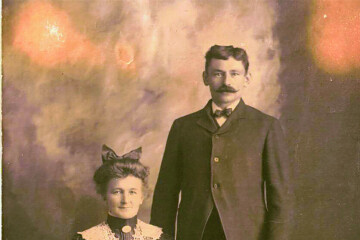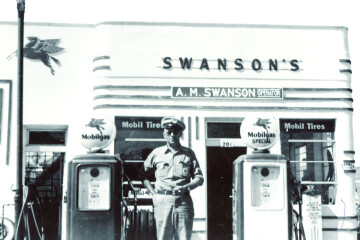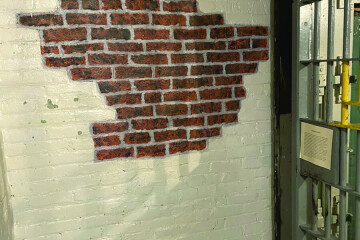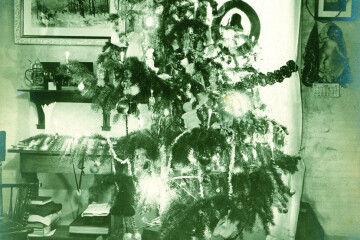For the Benefit of the Country
Memories of Early Montana Politics

This Election Day, voters may appreciate a brief respite from current campaigns to hear about local politics in the early twentieth century. Roy Keister, a Democrat, and George Sinton, a Republican, were both interviewed by Lee Cooper in 1975 as part of the Gallatin County Bicentennial Project on Oral History. Today preserved in the Gallatin History Museum archives, both oral histories provide interesting insight into and memories of the local political scene one hundred years ago.
Roy Keister was born in Nebraska in 1885. An attorney, Keister came to Bozeman in 1911 and partnered with a classmate to open a law practice. To make ends meet as a young lawyer new to town, Keister also worked for O.E. Myers Realty Company, which at the time was selling parcels of land near what is today Bozeman Hot Springs. His legal and real estate ventures brought him into contact with many people from all over Gallatin County, and one could say Roy Keister fell into politics by chance.
In 1912, while filling in for a Three Forks lawyer away on holiday, Keister attended a local Democratic party gathering. “At that time, the Democratic County Central Committee was holding their county meeting at Three Forks, which I attended. At the conclusion of the convention, they had elected James Arnold as chairman of the Democratic County Central Committee, and he came to me and offered me a job of being secretary for the Democratic Central Committee at a pay rate of $125 per month, plus some side money that was available for some extra work that could be done. I could be in Bozeman and spend part of my time at the [law] office if I were needed. I held that job from the 15th of July until about the 10th of December 1912.” Roy Keister later served as the chairperson of the Democratic Central Committee in 1914 and in 1916.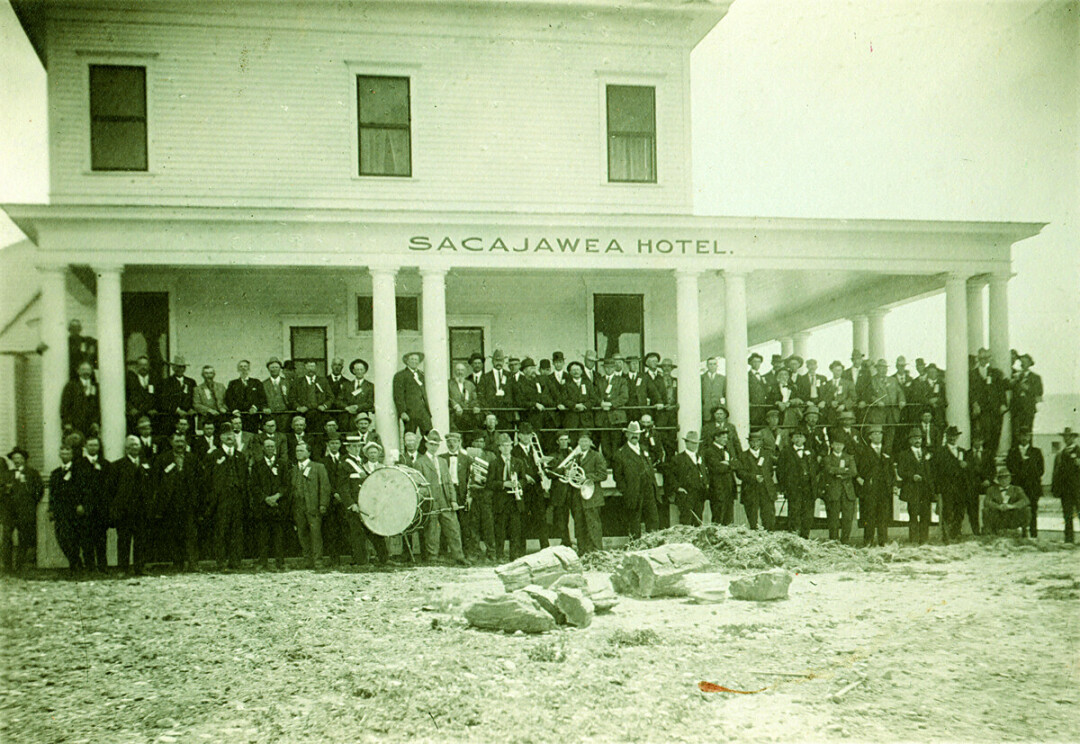
At the time of his oral history interview in 1975, Republican George Sinton had served as a presidential elector for over fifty years. As an elector, he voted for Calvin Coolidge in 1924, Herbert Hoover in 1928, twice for Dwight Eisenhower, and twice for Richard Nixon. Sinton, born in 1886, was a native of Ireland and came to Canada at age 20. After working several months in a logging camp, Sinton moved to Montana, where he operated a small grocery store in Billings. In 1930, he relocated to Manhattan, Montana and became a cattle rancher, while continuing his involvement with the Republican Party.
George Sinton’s entrance into Montana politics stemmed from his public speaking talents. In his words, “I was a pretty good speaker, and I believed in the policies of the Republican Party. And I spoke in different places. They would send me to different towns, and where there were men who thought that they needed somebody to boost their game to get elected, they would ask me to speak. And I was quite a good speaker, and the result was that everyone knew me in Montana, from speaking in their community.” In his speeches across the state, Sinton supported “Republican policies in general” and candidates like Herbert Hoover.
Both Sinton and Keister had experience with political campaigns. When asked about how campaigns were run in Gallatin County in the early 1910s, Keister noted that the Corrupt Practices Act was not yet in force in Montana. “We were allowed to spend all the money we could raise by donations and solicitations, and we conducted a very active campaign. We had committee members in every precinct in Gallatin County, with whom we communicated once a week, getting reports as to how the various candidates on our ticket were faring in their communities and what could be done to stimulate more interest and better vote-getting programs established for those not doing so well.”
In today’s political world of mailboxes stuffed with flyers, it is interesting to hear Roy Keister’s description of how parties encouraged people to vote in 1912. “First of all, in the [Democratic] headquarters, which were located in a building just west of the Bozeman Hotel, we had a partition made, and in the front we had tables and chairs, periodicals, newspapers, magazines...reading material of all kinds. Every morning we bought two boxes of apples, one yellow and one red, and then we passed out cigars profusely to all the people who came to see us, and we bought those at 10,000 cigars at a crack. Our campaign expense for that 1912 campaign approached $12,000.”
Roy Keister went on to relate a famous story of early-day politics in Montana, when buying the vote was not an uncommon occurrence, regardless of the party. Montana Copper King William A. Clark was accused of purchasing a seat in the United States Senate in 1899. According to Keister: “The Senator [Clark] was not elected by popular vote but was elected by the Senate of the State of Montana. And he paid substantial money. One local man here [John Walsh], a [state] senator, held out on the voting for Clark, because the pay didn’t suit him, and he demanded $50,000 or he wouldn’t vote for him. Clark’s people thought that was too much money and refused to pay it, so this senator [Walsh] kept voting for every other cat and dog you can think of, but didn’t vote for Clark. Walter Cooper [of Bozeman] was Clark’s manager, and he finally came to Walsh and said ‘Now, we’ve decided to take you on and pay you off and buy your vote. How do we deliver the money?’ Senator Walsh said, ‘You can toss it over my transom, which will be open.’ So, between 11 and 12 that night, $50,000 was tossed over the transom. The next morning, he [Walsh] voted for W.A. Clark for Senator.”
George Sinton’s success with campaigning for Republican candidates across Montana soon led to bigger opportunities for him. In 1924, he was chosen as a presidential elector. The concept of electors can be confusing to many, but Sinton described his role this way. “On December the nineteenth every year, all the presidential electors have to send in their vote. It used to be that you had to go there to vote...You vote in Helena, and the Secretary of State takes your vote and sends it on to Washington. So, your President is not officially elected [on Election Day]. We know who it’s going to be and everything like that, but he is not officially elected until December, until all the votes for the presidential electors in the United States are in.” As an elector, Sinton explained, “you can vote for anyone you want to, but you don’t do it, because you’ve been elected by your party, the Republican Party, and you vote according to what you’re elected for.
You don’t have to, but you always do.”
One interesting observation noted by both Keister and Sinton in their oral history interviews in 1975 was that Montana leaned more Democratic than Republican. Sinton remarked, “The early politics and the early settlers in Gallatin County were mostly Democratic. A lot of the settlers of Gallatin County came from the south. And the south was always Democratic since the Civil War. And the result was, it’s only in the last few years that Gallatin County has been a Republican county.” In his interview, Roy Keister expressed similar thoughts and made some observations about political parties in Montana and Gallatin County. “Montana, by and large, is a Democrat-controlled State. But the Republicans were able to produce and offer for candidacy men of greater stature and more ability than some of the Democratic opponents, and therefore many Republicans were elected governor of this state.”
Apart from some good-natured ribbing in their respective interviews, both Keister and Sinton had respect for the opposite party. Sinton illustrated this when he stated, “As a rule, any president that we have had, when he gets in, does what he thinks is the best thing for the country or for his party. I’ve never seen a Democrat who deliberately did anything that would hurt the country. He will do it differently then maybe what you would have done, or different than what you would like to see him do, but he believed that what he was doing was for the benefit of the country at large.”
Roy Keister was involved in organized politics for only a few years. He turned exclusively to his law practice in 1916 because, in his words, “business had picked up in the office to the point where I had full-time employment. I realized that being too partisan was a detriment to your business because Republicans didn’t want to employ a Democrat lawyer, and they would find a Republican lawyer who would do business for them. So, it was a detriment to business, and I decided the best thing to do was get out.” Keister continued to practice law in Bozeman into his early 90s. He passed away in 1979 at age 94.
Known as the “Dean of the Electoral College,” George Sinton was one of the longest serving presidential electors in the entire nation. Besides running his cattle ranch, Sinton later owned a bowling alley in Manhattan. He passed away in 1976 at age 89.

